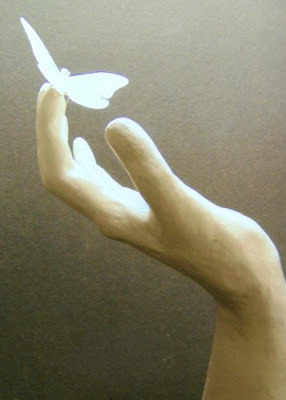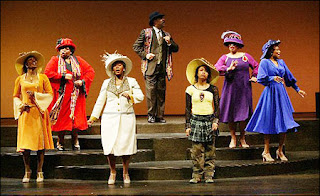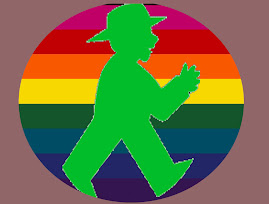
Nobody likes change, and nobody likes letting go of something if it's what they're comfortable with and what they're used to. But change is sometimes necessary for improvement, and the process of letting go can catalyze developments in ourselves and in society.
The students taking this course needed to let go to some extent of their sensitivities. While we can aim in our discussions to use terminology to not offend anyone (Homosexual or Queer? To each their own), the very subject matter is bound to make students, especially straight students, uncomfortable. Additionally, we are looking at LGBT culture against the backdrop of dominant society and while we can bring in the various racial and class discrepancies within the LGBT community, some of those issues deserve entire courses dedicated to them. We needed to let go of the sense of individual slights whenever a white society was assumed to be the norm and the first and easiest context to put an LGBT issue in. Returning to the concerns of straight classmates. Queers Read This: I Hate Straights, was supposed to make you uncomfortable and question your role as the A in LGBTA. A straight person will not find a comfortable home in the LGBT community, they will find a coalition. As Lisa Kahaleole Chang Hall points out in Bitches in Solitude, "Home is where you want to feel safe with others life you; coalition is a deeply painful and difficult process during which you come to terms with others who are different in the pursuit of a finite common goal" She goes on to assert that believing in unity is a recipe for disaster, manifested as an "explosion of our repressed differences." Perhaps that's how we should have come into this course, as a coalition (while not as extreme as those mentioned by Chang Hall) rather than as a welcoming comfortable place to discuss issues that most students relate to very personally. The LGBT community should be welcoming, but upon entering it one should be prepared to find more difference than similarities.
The first "letting go" I noticed as we followed LGBT history from the 1900s was the abandonment of the loneliness surrounding believing that you are the only one. As homosexuality was medicalized and gay men and lesbians oppressed, they were also recognized as a subset of the population and thrown together, ironically strengthening individual thoughts of isolation. D'Emilio speaks to this in his Overview of Homosexuality and American Society, “the medical model promoted the articulation of a gay identity and made it easier for may lesbians and homosexuals to come out.”
Moving forward in time, many people had difficulty letting go of the didactic thinking that a gay person must either be an outlaw or an assimilationist, the idea that there was no place in society for someone who wanted to exist in it as their own person. Groups like Mattachine hindered this release because they did not allow sufficient mobility within the organization to set up a supported stance in the middle of the diad. It’s almost as if these groups knew their foundation was dependent on the prevalence of the diad and thus deviation would be their destruction. Which is pretty much what happened.
A crucial thing to let go of is the heteronormative ideal, a slow process beginning in the 1960s that still has not reached resolution. By releasing this ideal, dominant society will respect and eventually accept lesbians and gay men as members of society and as equals. This was the take home message I got from Duberman’s Stonewall narrative. Stonewall was a turning point not because it forced people to band together or because it was an explosion that infiltrated and effected every queer person in America, because neither of those things truly happened, Stonewall gave members of the gay and lesbian community something to think about, it let them question how they were being treated and decide (possibly for the first time) if they were going to accept that role in society or fight for something better.
Finally, the thing that we still need to let go of, that I am afraid may not happen for a while, is the need to constantly criticize and marginalize our own. Examples of this that I have brought up over the course of this blog have ranged from Roy Cohn’s rejection of the homosexual community due to their lack of clout to prejudice in the lesbian community excluding femmes and transwomen (MWMF) as well as transmen.
In conclusion, and this is really my conclusion for what this course has taught me, be flexible. Be flexible in your definitions of gender, and other people’s lifestyles won’t bother you. Be willing to work alongside people who are different from you because that difference brings strength to your common cause. Dare to fall on the edge of a two-sided dichotomy coin. Question the norm. And, most importantly, a win against dominant society does not give you leave to start oppressing your own.
Karen




